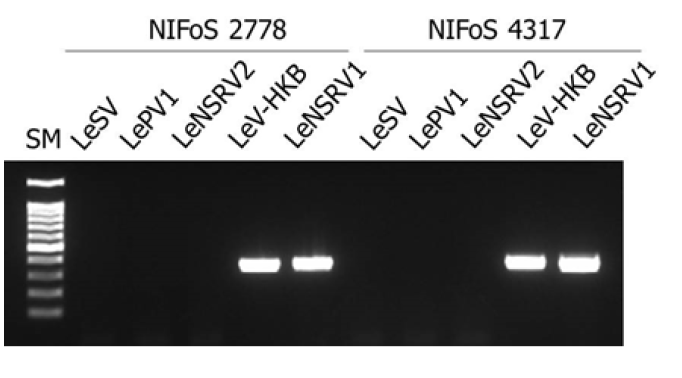Abstract
Figures & Tables

Fig. 1. RT-PCR detection of viral infection from Sanbaekhyang (NIFoS 2778) and Taehyanggo (NIFoS 4317) using specific primer sets targeting each virus-specific RNA-dependent RNA polymerase (RdRp) genes. SM, 100 bp marker; LeSV, spherical virus; LePV1, partitivirus 1; LeNSRV2, negative-strand RNA virus 2; LeV-HKB, mycovirus-HKB; LeNSRV1, negative-strand RNA virus


